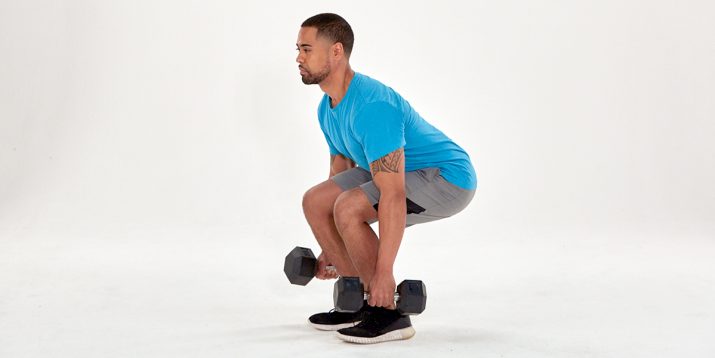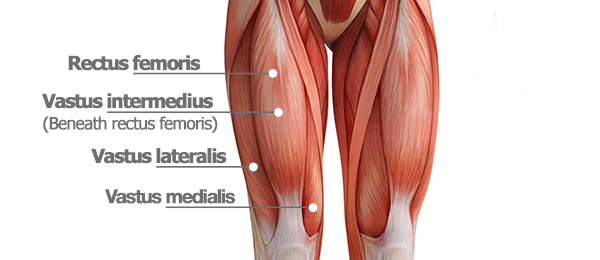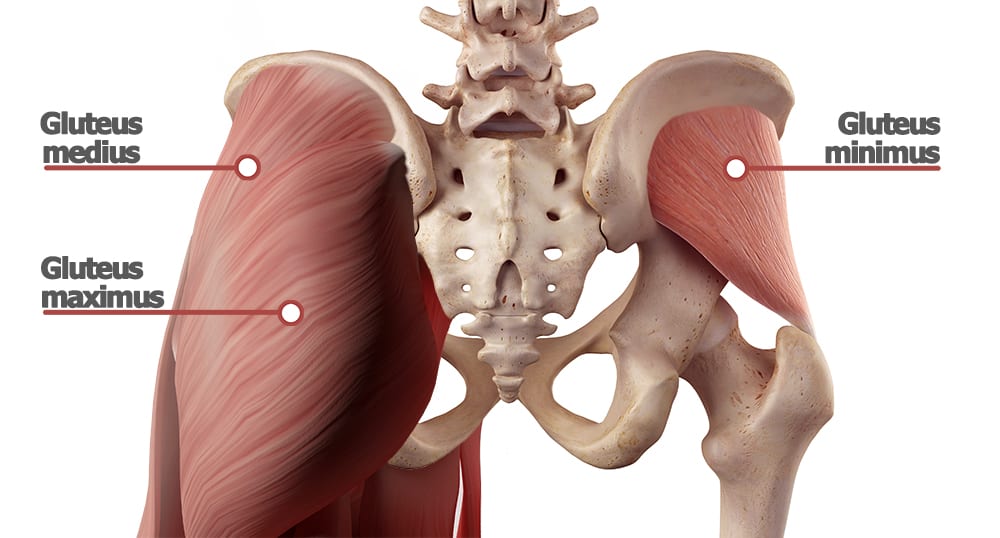How to Do the Dumbbell Squat

One of the Big Three strength-training exercises (alongside the bench press and deadlift) for delivering benefits across multiple major muscle groups, the squat is the king of lower-body exercises. The dumbbell squat in particular offers several advantages over the barbell version, including greater safety, muscular balance, and convenience for beginners or those with limited access to equipment.
But form is critical. The dumbbell squat directly engages prime movers that span multiple joints, increasing the complexity of the movement and the potential for injury, so you’ll want to learn how to do it right. Read on to learn how to perform the dumbbell squat with proper form, as demonstrated by BODi trainer Lita Lewis.
Dumbbell Squat: Step-by-Step Instructions
- Stand with your feet hip- to shoulder-width apart, holding a pair of dumbbells at arm’s length by your sides.
- Keeping your back flat and core braced, push your hips back, bend your knees, and lower your body until your thighs are parallel to the floor.
- Pause, then push yourself back up to the starting position.
Expert tip: The most important skill you can master for any squat variation — regardless of whether it involves a dumbbell, barbell, or any external weight at all — is the “hip hinge.” Instead of bending forward at your waist as you lower yourself, start by pushing your hips back, as if you were closing a car door with your butt.
Doing so will help ensure that you “sit back” into the exercise, engaging your powerful posterior chain muscles and minimizing the stress on your spine. The result: greater power, better form, and a lower risk of injury. Here’s how to master the hip hinge.
How to Make the Dumbbell Squat Easier
Use lighter weights, or do a half squat, slowly working your way down to a full squat as your strength and mobility improve. Another option: ditch the dumbbells and do a squat without weights (also known as a bodyweight squat).
How to Make the Dumbbell Squat Harder
Use heavier weights, or do a Bulgarian split squat, elevating one foot at a time on a bench behind you (do equal reps on both legs).
What Muscles Does the Dumbbell Squat Work?
There’s a reason trainers call the squat the king of lower-body exercises: No other move engages more muscle below the waist. The dumbbell squat targets the muscles of the thigh and butt, but also works the hamstrings and calves. When you perform the exercise correctly, you also enlist a suite of stabilizing muscles.
Quads

The muscles of the quadriceps comprise the front of your thigh, and govern the straightening of your knee and flexion of your hip. Your quads consist, fittingly, of four muscles: the rectus femoris, vastus intermedius, vastus lateralis, and vastus medialis.
Glutes

The muscles of your buttocks straighten your hip, rotate your leg, and draw your leg out to the side. Among them is the biggest single muscle in the body, the gluteus maximus. It’s joined in descending size by the gluteus medius and the gluteus minimus.
Dumbbell Squat Variations
1. Dumbbell goblet squat
- Grab a dumbbell and hold it vertically in front of your chest, cupping the top end in both hands (imagine it’s a heavy goblet). Set your feet slightly wider than shoulder-width apart.
- Keeping your back flat and elbows pointed down, push your hips back and lower your body until your thighs are at least parallel to the ground (your elbows should touch the insides of your knees).
- Pause, and then slowly push yourself back up to the starting position.
2. Dumbbell sumo squat
- Stand with your feet wider than your shoulders while cupping one end of a dumbbell in your hands and letting your arms hang in front of your body. Turn your feet slightly outward. This is the starting position.
- Keeping your chest up and core engaged, push your hips back, bend your knees, and lower your body until your thighs are at least parallel to the floor.
- Pause, and then return to the starting position.
3. Bulgarian split squat
Appears in: Body Beast – Beast Up: Legs
- Stand facing away from a bench, holding a pair of dumbbells at arm’s length by your sides. Place the toes of your left foot on the bench behind you.
- Keeping your torso upright, lower your body until your right thigh is parallel to the ground (don’t let your left knee touch it).
- Pause, and then push back up to the starting position. Do equal reps on both legs.
4. Dumbbell jump squats

- Holding a dumbbell in each hand, stand tall with your feet shoulder-width apart.
- Keeping your chest up and core braced, push your hips back and lower your body until your thighs are parallel to the floor.
- Rise back up explosively, jumping straight up.
- Land softly, and immediately lower yourself into your next rep.
Dumbbell Squat vs. Barbell Squat
Should you always choose dumbbells over a barbell? Both dumbbell and barbell squats are excellent strength and muscle builders. You can typically go heavier with a barbell squat, but there are more dumbbell variations.
In short, there are benefits to both dumbbell squats and barbell squats, and a balanced strength program can (and often does) include both — especially if you work out in a gym.
We prefer dumbbell squats at BODi because they’re more accessible for people who prefer to work out at home. All you need are two dumbbells. With barbell squats, you need a bar, plates, and a rack — unless, of course, you have two very strong, very patient friends who can do the job of a rack.
